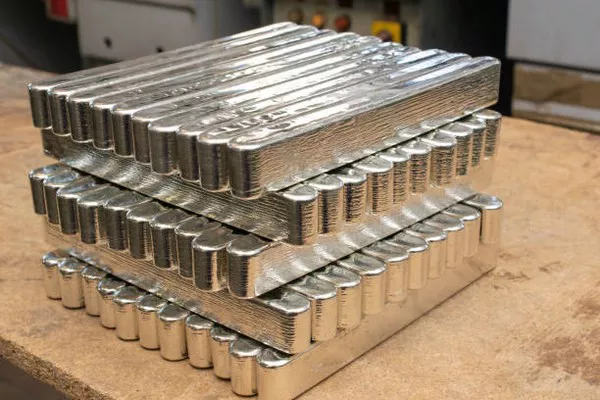Silver, often referred to as the “poor man’s gold,” has long been prized for its intrinsic value and diverse applications. From jewelry to industrial use, silver plays a pivotal role in various sectors of the global economy. As investors seek stability and diversification in their portfolios, the question arises: Where will silver stand a decade from now? To delve into this inquiry, we must explore current market trends, assess demand drivers, and consider potential future scenarios.
Current Market Dynamics:
As of recent years, silver has experienced fluctuations in its price, influenced by factors such as economic uncertainty, geopolitical tensions, and shifts in industrial demand. While traditionally considered a safe-haven asset akin to gold, silver also boasts significant industrial applications, making it susceptible to changes in manufacturing and technological advancements.
In the past decade, silver prices have exhibited both peaks and troughs. The global financial crisis of 2008 led to a surge in demand for precious metals, including silver, as investors sought refuge from volatile markets. Subsequent years saw silver prices reaching highs around $50 per ounce in 2011. However, the post-recession recovery and fluctuations in industrial demand caused prices to retreat, hovering around $15 to $20 per ounce in recent years.
Demand Drivers:
Understanding the demand drivers for silver is crucial in predicting its trajectory over the next decade. While investment demand remains a significant factor, industrial usage plays a pivotal role in shaping silver’s long-term prospects. The expanding renewable energy sector, particularly solar photovoltaic technology, stands out as a key driver of industrial silver demand. Silver’s exceptional conductivity and durability make it indispensable in solar panels, a sector poised for substantial growth in the coming years as countries prioritize clean energy initiatives.
Moreover, the burgeoning electronics industry continues to rely on silver for its conductivity and corrosion resistance properties. As technological innovation accelerates and demand for electronic devices surges, the need for silver in circuitry and component manufacturing is expected to rise steadily.
In addition to industrial applications, silver enjoys enduring appeal in the jewelry and luxury goods market. Its lustrous appearance and affordability compared to gold make it a popular choice for adornment. Emerging economies with growing middle-class populations, particularly in Asia, are expected to drive demand for silver jewelry in the years to come.
Supply Dynamics:
Assessing future silver prices necessitates a comprehensive analysis of supply dynamics. While silver is mined as a primary commodity, it is also produced as a byproduct of base metal mining, particularly copper and zinc. Fluctuations in base metal prices can impact silver production, as miners adjust their operations accordingly.
Moreover, environmental regulations and social responsibility initiatives are increasingly shaping mining practices, potentially affecting future silver supply. Concerns over sustainability and ethical sourcing are prompting mining companies to adopt more eco-friendly and socially responsible practices, which may impact production costs and, consequently, silver prices.
Furthermore, recycling plays a vital role in the silver supply chain. With advancements in recycling technology and increasing awareness of the importance of resource conservation, recycled silver is likely to contribute significantly to future supply.
Future Scenarios:
Predicting the future of silver involves navigating various potential scenarios influenced by economic, geopolitical, and technological factors. One plausible scenario entails a continuation of current trends, with silver prices exhibiting moderate fluctuations driven by shifts in investment sentiment and industrial demand.
However, several factors could significantly alter the trajectory of silver prices over the next decade. A resurgence of inflationary pressures, geopolitical conflicts, or unforeseen disruptions to global supply chains could lead to a renewed interest in precious metals as safe-haven assets, propelling silver prices upward.
Conversely, advancements in alternative materials or technological innovations could dampen industrial demand for silver, exerting downward pressure on prices. Moreover, macroeconomic trends such as shifts towards renewable energy sources or changes in consumer preferences could impact the balance between supply and demand in the silver market.
Conclusion:
Forecasting the future of silver requires a nuanced understanding of market dynamics, demand drivers, and supply considerations. While silver’s dual role as a precious metal and an industrial commodity lends it resilience against market volatility, predicting its trajectory over the next decade remains a complex endeavor.
Investors, industry stakeholders, and policymakers alike must remain vigilant to evolving trends and developments that could shape the future of silver. Whether as a hedge against economic uncertainty, a key component in renewable energy technologies, or a timeless adornment, silver is poised to maintain its relevance and value in the global economy for years to come.


